The Supermicro X11SCA-W Motherboard Review: For Entry Level Xeon
by Gavin Bonshor on November 19, 2018 1:00 PM ESTVisual Inspection
Upon the first inspection of the Supermicro X11SCA-W motherboard, the most polarizing aspect comes from the design. The board conforms to the standard ATX form factor which allows users to build a commercial based system into a standard chassis without the need to opt for a specialist case or blade. With a fully green PCB, the X11SCA-W isn't going to win any fashion awards and it's very apparent that Supermicro has gone for a functionally adept commercial option based on useful features without fanfare.
Like other ATX form factor motherboards, the X11SCA-W follows a conventional consumer layout with much of the componentry located where we would expect. The power delivery and 8-pin 12 V CPU power input are located along the top of the PCB, while the RAM slots and SATA ports are located on the right-hand side. The PCIe slots are found in the bottom left half of the board.
The four memory slots have support for DDR4-2666. This includes compatibility for unbuffered ECC and non-ECC modules with a maximum voltage of 1.2 V. Just as the Xeon E-2100 series processors support, the Supermicro X11SCA-W has the ability to install up to a maximum of 64 GB in total. On the right-hand side of the RAM slots is a 24-pin 12 V ATX motherboard power input, while an 8-pin 12 V CPU power input is located on the left-hand side just next to the power delivery heatsink.
Storage wise the Supermicro X11SCA-W offerseight SATA ports, a single U.2 port and two PCIe 3.0 x4/SATA M.2 slots with both allowing M.2 22110 form factor drives to be installed. The eight SATA ports allow for users to make use of RAID 0, 1, 5 and 10 arrays so they wish to do so. The pair of included M.2 slots also have support for RAID 0 and 1 arrays and benefit from thermal sensor readers. Unfortunately the M.2 slots and U.2 port do share bandwidth with other slots.
- M.2_1 shares bandwidth with SATA_6 and the PCIe 3.0 x4 slot
- M.2_2 shares bandwidth with SATA_7 and the U.2 slot
Dominating the PCB on the bottom right-hand side of the PCB are the PCIe slots. The Supermicro X11SCA-W has two full-length PCIe 3.0 slots which both have metal armor physical slot protection. The top full-length slot operates at PCIe 3.0 x16 while the second full-length slot operates at a maximum of PCIe 3.0 x8. This means the X11SCA-W can operate at either x16/x0 or x8/8. From the chipset is a single PCIe 3.0 x1 slot, a PCIe 3.0 x4 slot which shares bandwidth with the top M.2 slot, and a legacy PCI 32bit 5 V slot is featured at the bottom of the board.
The power delivery on the Supermicro X11SCA-W is somewhat irrelevant to the performance, as this board does not support voltage control. The Infineon PXE1520C PWM controller is running in a 5+2 configuration with each individual Infineon TDA21470 dual driver MOSFET being allocated its own Vitech 60 W inductor. This means the VCore is running a 5-phase design. The SoC area of the power delivery consists of two Infineon TDA21240 MOSFETs. Provided for cooling is a thin and lightweight aluminium heatsink which uses push pins to connect it to the PCB. Supermicro's legacy is built on its knowledge of server design, and the power delivery is where Supermicro tends to show this off with server-class components.
Focusing on the included controller set and rear panel of the X11SCA-W server-centric motherboard, Supermicro has opted to go with a dual Intel Gigabit LAN array. The red LAN port is powered by an Intel I219-LM controller with the adjacent black LAN port being driven by an Intel I210-AT controller. The W in the X11SCA-W model name stands for wireless and is provided in this case by an Intel 9462 1x1 802.11ac Wi-Fi adapter.
The five 3.5 mm audio jacks and single S/PDIF optical output is powered by an older Realtek ALC888S 7.1-channel HD audio codec. For video, to use the integrated graphics on some of the Xeon E processors, there is a DisplayPort, HDMI and a DVI-D output. Finishing off the rear panel is a USB 3.1 Gen2 Type-A, a USB 3.1 Gen2 Type-C port and two USB 3.0 Type-A ports. Users looking to expand upon this can do so with the USB 2.0 or USB 3.0 header on board; each of these headers opens up an additional two ports per header. A solitary USB 3.1 Gen2 Type-A port is also located just to the right of the memory slots.
What's in The Box
Supermicro has provided a nice bundle with their retail packaged X11SCA-W model with the most notable inclusions being six red SATA cables, a silver rear IO shield, two M.2 SSD folder mounts and two Wi-Fi antennas. The bulk package bundle is slightly different with four less SATA cables than the retail packaging, as well as lacking a quick reference guide for this model. It should be noted that users will need to download the driver installation disc directly from the Supermicro website as they do not include any disc or media in the box; retail or bulk.
- Six SATA Cables (straight angled)
- Rear IO Shield
- Two Wi-Fi / BT5 antennas
- Quick Reference Guide
- Two M.2 folder mounts


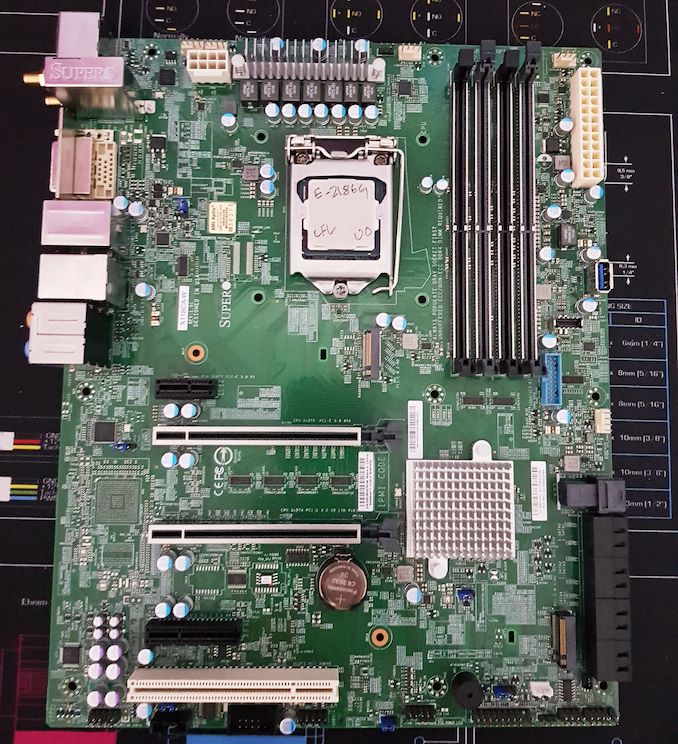
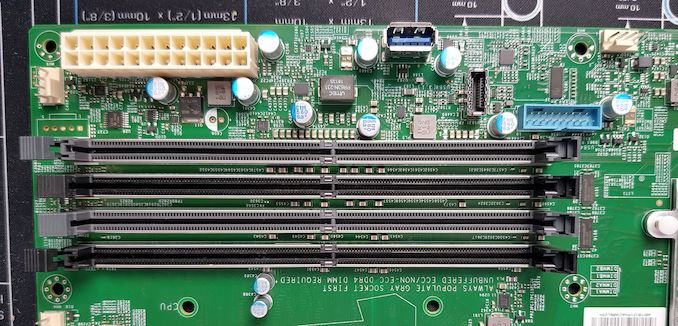

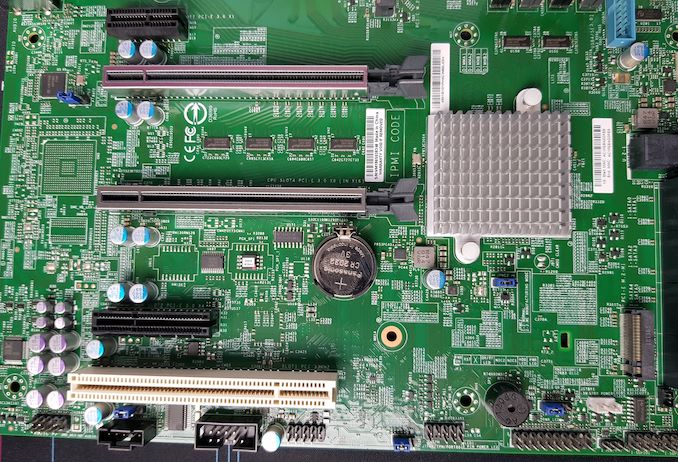
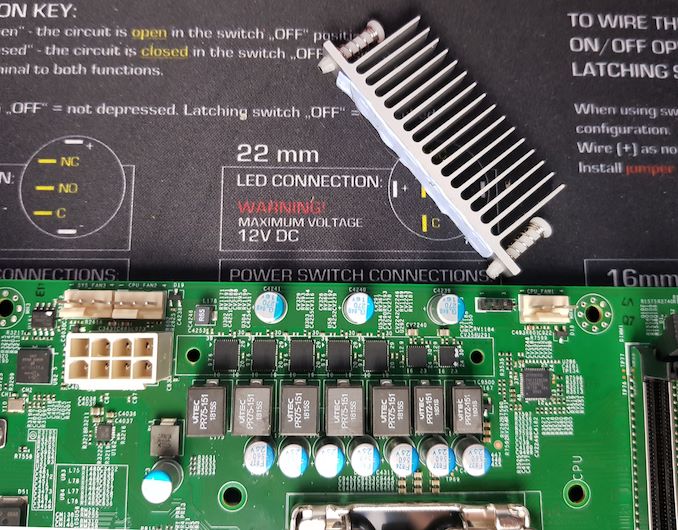

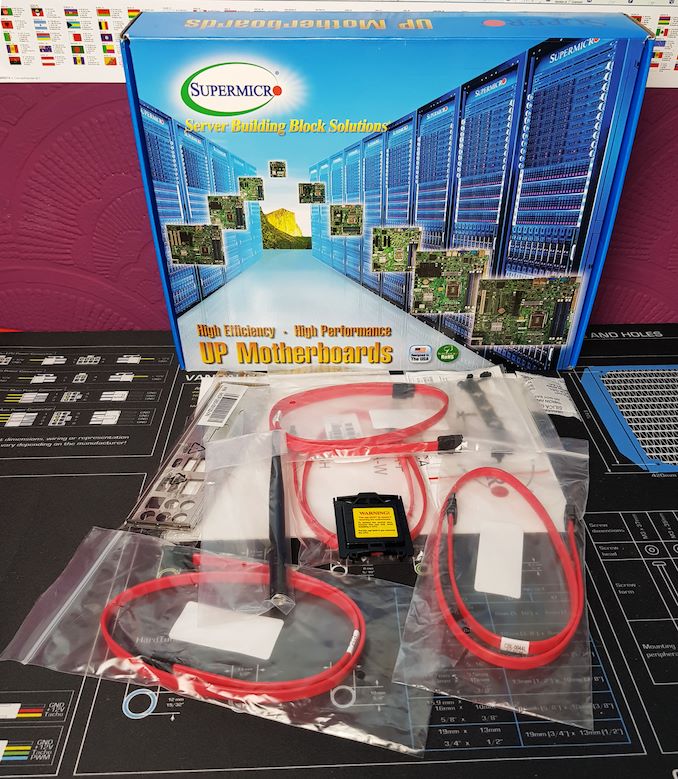








37 Comments
View All Comments
mode_13h - Tuesday, November 20, 2018 - link
Gah! What's the point in using/testing this without ECC RAM?bill.rookard - Tuesday, November 20, 2018 - link
Well the only real advantage to testing with ECC is to see if it catches errors. How would you go about simulating errors?If ECC RAM is rated at x MHz, and it runs at x MHz, then it’s good. I don’t think this board has real support for overclocking, so why worry about it?
mode_13h - Tuesday, November 20, 2018 - link
ECC places an extra burden on the CPU's IMC. I don't expect it would have a noticeable impact on performance, but why not benchmark it & find out?bolkhov - Tuesday, November 20, 2018 - link
Feature-wise, the whole X11SCA line is a bit scarce compared to its predecessor X11SAE: less slots, less USB ports, much I/O sharing (X11SAE* shared nothing).And no mATX variant (X11SAE-M was a little gem!).
Even consumer-grade C9Z390-CGW has a reacher feature set, despite being cheaper.
X11SCA* line is a bit disappointing, to put it mildly.
dsplover - Tuesday, November 20, 2018 - link
I love Supermicro for mission critical stability and long life. Wish I knew about these before but my 8086k/Q370 in the CSE-512f-410B 1U is loud and stable.Mine came with Rice Chips which are higher quality than Spy chips.
mode_13h - Tuesday, November 20, 2018 - link
You mean "sparse"? "spare"?As you probably know, the X11SAE only supports Skylake and Kaby Lake.
I used to run Supermicro, but more recently switched to ASRock Rack. So far, so good.
bolkhov - Wednesday, November 21, 2018 - link
I meant "poor", but tried to be more polite.Yes, incompatibility between C236 and Coffee Lake is a problem (I even tried i5-8500 on X11SAE-F ("what if?") -- no go: BMC works, but CPU doesn't start).
To be honest, the x11sae-F isn't ideal: it has some glitches and stability problems.
But BMC-less X11SAE and its predecessor X10SAE are ideal for workstation use.
If only Supermicro could create an adequate X11SAE successor (not a cut-down one like X11SCA), that could be an ideal mobo for CFL.
As to ASRock Rack: some models look interesting, but those are hard to get in my organization (a government scientific institution).
So, now the most feature-rich Xeon E mobo is Asus C246 PRO.
mode_13h - Wednesday, November 21, 2018 - link
Sorry, what do you mean by "CFL"?bolkhov - Wednesday, November 21, 2018 - link
"CFL" is Intel's abbreviation for Coffee Lake (similarly KBL is Kaby Lake, SKL=Skylake, BDW=Broadwell, HSW=Haswell, KNL=Knight's Landing, etc.)mode_13h - Friday, November 23, 2018 - link
Thanks. I knew about HSW, SKL, KNL, and KBL. In the right context, I'd have figured that, but I was thinking it was some reference to what you were using it for.So, what's Coffee Lake Refresh? CLR? Or do they still call it CFL?